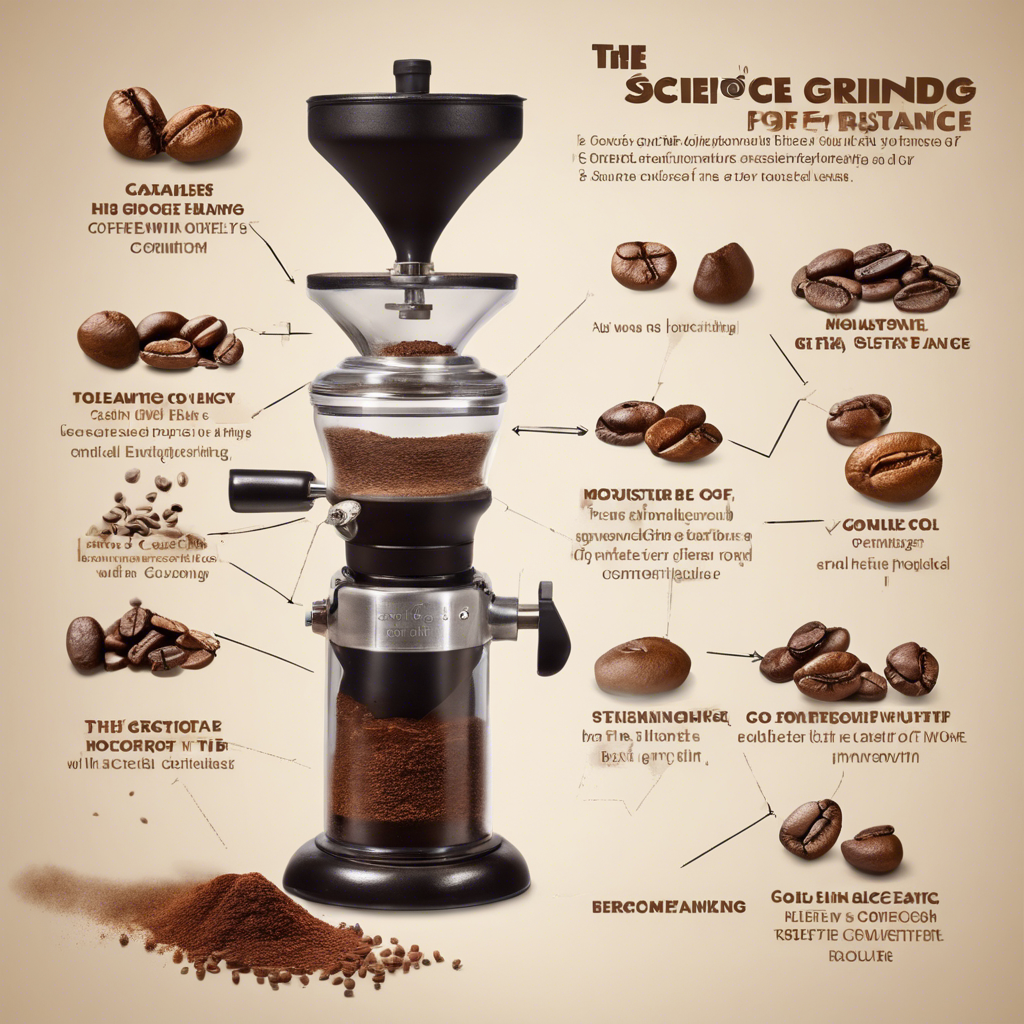The Science of Coffee Grinding: How Moisture Reduces Static and Enhances Flavor

A team of chemists and volcanologists at the University of Oregon have discovered that adding a spritz of water to coffee beans before grinding reduces static electricity buildup, resulting in a more consistent and stronger-tasting shot of espresso.
Grinding coffee beans can be a messy process, with static electricity causing the grounds to cling to the grinder. However, a recent study by chemists and volcanologists at the University of Oregon has revealed that moisture in coffee beans plays a crucial role in the buildup of static. By adding a small amount of water to the beans before grinding, not only can static be reduced, but the resulting shot of espresso can also be more accessible and flavorful.
Unraveling the Science of Static in Coffee Grinding
The observation of electrical buildup in coffee grounds is not a new one. Industrial-scale roasteries often experience coffee grounds flying up and sticking to various surfaces. However, the recent study conducted by the University of Oregon provides a scientific understanding of the mechanism behind this phenomenon. By studying how friction and fractures generate electric charge in various processes, the researchers were able to shed light on the buildup of static in coffee grinding.
Collaborating Across Scientific Disciplines
The collaboration between coffee grinding experts and volcanologists may seem unlikely at first glance. However, both teams realized they were studying the same core phenomenon: the accumulation of electric charge in tiny particles resulting from friction and fractures. By using a Faraday cup, a device commonly used by volcanologists to measure charge on volcanic ash, the scientists were able to make similar measurements on coffee grounds. This collaboration exemplifies the growing field of coffee science, where experts from diverse disciplines come together to explore the fundamental science behind coffee.
The Impact of Moisture on Coffee Grounds
Through a series of experiments involving commercially produced coffee and roasting their own beans, the researchers discovered that moisture plays a crucial role in the amount of charge accumulated on coffee grounds. Lighter roast coffees, which have more internal moisture, gained less static charge during grinding and tended to charge positively. On the other hand, darker roasts, which are drier, gained more charge and tended to accumulate negative charge. This unexpected finding highlights the importance of internal moisture in the charging process.
Enhancing Flavor and Efficiency with Moisture
Adding a small amount of water to whole coffee beans before grinding can significantly improve the brewing process. By reducing static, this method not only cuts down on mess but also avoids clumps in the coffee. When brewing espresso, the water can reach all the coffee grounds evenly, resulting in a more concentrated end product. The concentration of the brewed coffee can increase by approximately 10%. However, it’s important to note that these brewing results may not apply to other methods, such as French press, where the grounds are immersed in water.
The Untapped Potential of Coffee Science
The study conducted by the University of Oregon highlights the vast potential for scientific exploration in the world of coffee. With opportunities to apply rigorous experimental techniques and measurements to a daily ritual, there are still many low-hanging fruits waiting to be discovered. Coffee experts emphasize the need for further research in various aspects of coffee science, from brewing methods to flavor profiles, to enhance our understanding and appreciation of this beloved beverage.
Conclusion: The study conducted by the University of Oregon offers valuable insights into the science of coffee grinding. By understanding the role of moisture in reducing static electricity buildup, coffee enthusiasts and baristas can improve the consistency and flavor of their brews. This collaboration between chemists and volcanologists exemplifies the interdisciplinary nature of coffee science and opens up new avenues for research and exploration. As we continue to unravel the secrets of coffee, there is no doubt that more discoveries and innovations await in the world of this beloved beverage.





